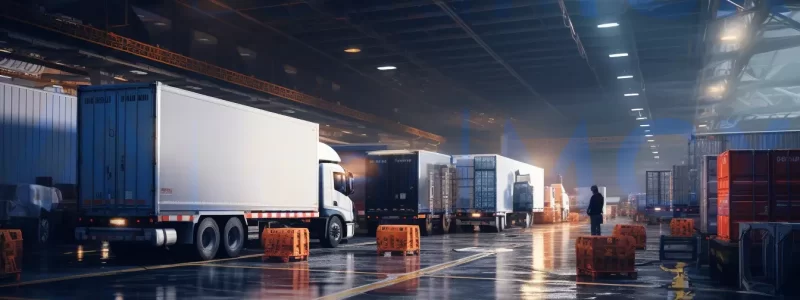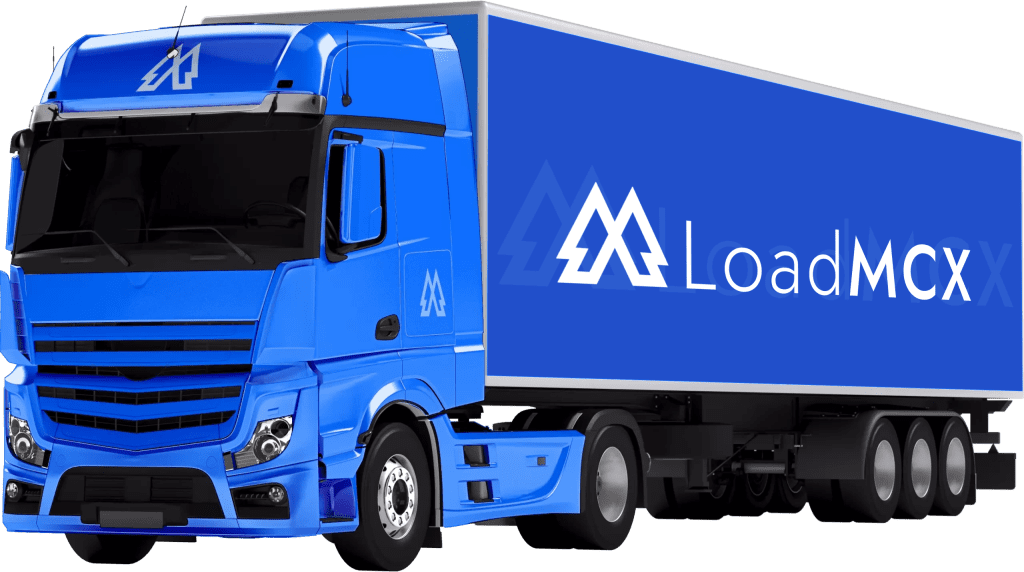The landscape of freight and logistics is undergoing a significant transformation, largely fueled by the rise of on-demand freight services. In this blog post, we delve into the dynamics of this shift and explore the challenges and opportunities it presents for Third-Party Logistics (3PL) providers.
As businesses increasingly seek agility and flexibility in their supply chains, on-demand freight is emerging as a key player in meeting these evolving demands.

Understanding On-Demand Freight:
On-demand freight services enable companies to request and receive freight assistance on an as-needed basis, eliminating the constraints of fixed contracts and allowing for swift adjustments to fluctuating demand.
This model is particularly appealing to businesses seeking agility in their supply chain operations, as it empowers them to optimize resources efficiently while maintaining cost-effectiveness.

Challenges for 3PLs:
Traditional 3PLs face a transformative shift in adapting to on-demand freight, necessitating significant operational adjustments to handle variable demand and shorter lead times, moving away from fixed contracts.
-
1
Adaptation to Variable Demand:
Traditional 3PLs are accustomed to handling fixed contracts and planned shipments. The shift to on-demand freight requires a significant adjustment in operational strategies to accommodate variable demand and short lead times.
-
2
Technology Integration:
Implementing the right technology infrastructure is crucial for on-demand freight services. 3PLs need to invest in advanced logistics platforms, real-time tracking systems, and automated processes to meet the speed and efficiency expectations of on-demand freight.
-
3
Last-Mile Logistics:
On-demand freight often involves last-mile deliveries to end consumers. 3PLs must optimize their last-mile logistics to ensure timely and cost-effective delivery, which may require new partnerships and innovative solutions.

Opportunities for 3PLs:
3PLs embracing on-demand freight gain a competitive edge by offering enhanced agility, powered by cutting-edge technologies like AI and IoT. Strategic partnerships with on-demand platforms expand their service reach, allowing them to navigate modern supply chain uncertainties and provide customer-centric solutions, emphasizing real-time visibility and proactive communication for differentiation in the market.
-
1
Agility and Flexibility:
3PLs that successfully adapt to on-demand freight can offer enhanced agility and flexibility to their clients. This positions them as valuable partners for businesses navigating the uncertainties of modern supply chains.
-
2
Technology Innovation:
Embracing advanced technologies such as AI, machine learning, and IoT can empower 3PLs to optimize routes, predict demand patterns, and enhance overall operational efficiency in the on-demand freight landscape.
-
3
Collaboration and Partnerships:
Building strategic partnerships with on-demand freight platforms and technology providers can open new avenues for 3PLs. By integrating with these networks, 3PLs can access a broader range of clients and expand their service offerings.
-
4
Customer-Centric Approach:
On-demand freight emphasizes the importance of customer satisfaction and quick turnaround times. 3PLs that prioritize a customer-centric approach, providing real-time visibility and proactive communication, can differentiate themselves in the market.

Re-shaping On-demand Freight
3PLs navigating this dynamic environment have a unique chance to not only survive but thrive by leveraging technology, revamping their operational methodologies, and cultivating strategic collaborations. The ability to embrace these transformative elements positions 3PLs as key players in the emerging on-demand freight era, where flexibility and innovation are integral to success.
In the on-demand freight era, technology adoption becomes paramount for 3PLs seeking to remain competitive and responsive to evolving market demands. The incorporation of advanced logistics platforms, real-time tracking systems, and automated processes is not merely a choice but a necessity for those aiming to thrive in this dynamic landscape. Operational agility is equally critical as 3PLs must adapt their traditional workflows to accommodate the variable demand inherent in on-demand freight services.
Collaboration emerges as a cornerstone for success in the on-demand freight era, as 3PLs forge strategic partnerships to navigate challenges and capitalize on opportunities. These collaborations extend beyond traditional boundaries, encompassing partnerships with on-demand freight platforms, technology providers, and other stakeholders in the logistics ecosystem. 3PLs actively engaged in collaborative innovation not only enhance their service offerings but also contribute significantly to driving industry-wide change.

Pros and Cons of On-demand Freight
On-demand freight services have emerged as a game-changer, offering a host of benefits but not without their share of challenges. Let’s explore the advantages and drawbacks of this dynamic model.
Benefits of On-Demand Freight:
-
1
Cost-Efficiency:
On-demand freight eliminates the need for long-term contracts, allowing businesses to optimize costs by paying only for the services they use. This model is particularly beneficial for companies with fluctuating shipping needs, as it helps in avoiding unnecessary expenses during periods of lower demand.
-
2
Agility and Flexibility:
One of the primary advantages of on-demand freight is its ability to provide businesses with unparalleled agility and flexibility. Shippers can adapt swiftly to changing demands, scale their operations up or down, and respond effectively to market fluctuations.
-
3
Real-Time Visibility:
On-demand freight services often come equipped with advanced tracking and monitoring systems, providing real-time visibility into the movement of goods. This enhances transparency, reduces the risk of lost shipments, and allows for proactive decision-making.
On-demand freight is reshaping modern supply chains by providing a flexible solution that contrasts with traditional models tied to fixed contracts and schedules. This transformative approach enables businesses to swiftly adjust logistics operations in response to fluctuating demand, crucial for industries requiring rapid adaptations to consumer expectations and market trends.
The shift towards on-demand freight is driven by its potential to optimize cost structures, replacing traditional logistics commitments with a cost-effective pay-as-you-go model that aligns with businesses’ financial goals. Moreover, the on-demand model enhances visibility through advanced tracking systems, ensuring real-time monitoring and transparency throughout the supply chain.
Drawbacks of On-Demand Freight:
-
1
Operational Challenges:
The on-demand model introduces operational challenges, especially for traditional logistics providers. Adapting to variable demand, optimizing routes in real-time, and efficiently managing last-mile deliveries can be complex and require substantial technological investments.
-
2
Technology Dependency:
While technology is a boon, heavy reliance on it can become a drawback. On-demand freight services heavily depend on advanced logistics platforms, which may pose a challenge for businesses lacking the necessary infrastructure or struggling to keep up with rapid technological advancements.
-
3
Last-Mile Complexities:
Last-mile logistics, crucial for delivering goods to end consumers, can be intricate and costly. On-demand freight services often involve navigating the challenges of congested urban areas, potentially impacting delivery times and overall customer satisfaction.
As consumers increasingly prioritize convenience, on-demand freight emerges as the preferred choice for businesses aiming to meet these evolving expectations.
Search The Largest Trucking Directory
Discover top-rated carriers & transportation companies on LoadMCX
